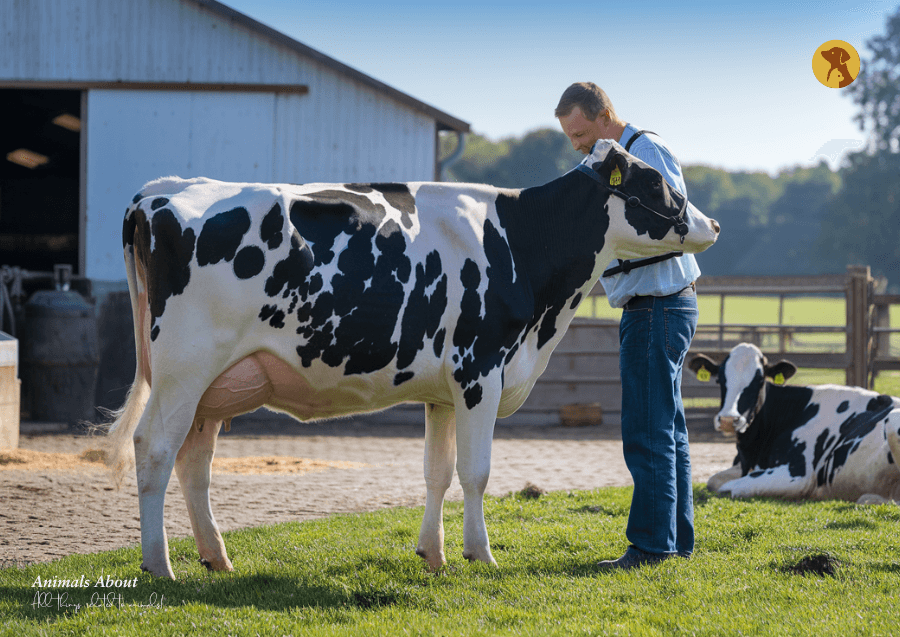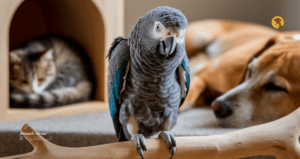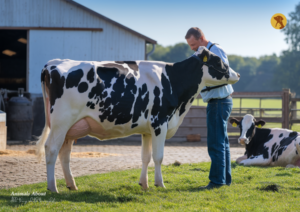When a cow stops producing milk, it can be a stressful situation for farmers and animal lovers alike. Whether you’re a small-scale dairy farmer, a homesteader, or someone who simply cares about animals, understanding why your cow is not producing milk is the first step toward resolving the issue. In this article, we’ll explore the most common causes of low milk yield and offer natural, effective solutions to help your cow regain healthy milk production.
Why Is My Cow Not Giving Milk?
1. Natural Dry Period: A Common Reason Your Cow Is Not Producing Milk
Cows naturally go through a dry cow period, typically lasting around 60 days before calving. This rest phase is essential for udder recovery and the development of the next lactation cycle. If your cow is nearing calving or hasn’t calved recently, she might be in this necessary resting period.
This phase allows the cow’s udder tissue to regenerate and prevents future udder health issues. It’s crucial not to force milk production during this time, as it can lead to lactation issues in cows later on.
2. Poor Nutrition in Cattle Can Lead to a Cow Not Producing Milk
Nutrition is a key factor in cow milk supply problems. If a cow’s diet lacks the necessary nutrients, it will impact both the quality and quantity of milk.
Important dietary elements include:
- High-energy feeds such as grains
- Adequate protein for milk synthesis
- Minerals and vitamins, especially calcium and phosphorus
A calcium deficiency in cows can lead to a condition called milk fever, which affects lactation. Always ensure your cow has access to balanced, nutrient-rich food and clean water.
3. Hormonal Imbalance Causing Cow Not Producing Milk
The milk production process is hormone-dependent. If your cow is suffering from a hormonal imbalance, it can disrupt milk let-down. Stress, illness, and poor nutrition often trigger hormonal shifts, leading to reduced milk yield or a complete stop in milk production.
4. Mastitis and Cow Not Producing Milk
One of the leading causes of milk loss in cattle is mastitis a bacterial infection in the udder. This painful condition not only reduces milk quantity but also affects its quality.
Symptoms include:
- Swollen or hard udder
- Heat and redness
- Decreased milk flow or clotted milk
Early detection and treatment are crucial. Proper hygiene and regular checks can help prevent mastitis.
5. Stress Affecting Cows
Believe it or not, cows are sensitive animals. Stress can have a direct impact on their ability to produce milk. Sources of stress include:
- Environmental changes
- Loud noises
- Transportation
- Poor handling
Stress interferes with oxytocin release, which is essential for milk let-down. Reducing stressors can significantly improve lactation issues in cows.
6. Reproductive Health: Cow Not Pregnant
If your cow hasn’t calved recently or isn’t pregnant, her milk production may naturally decline and stop. Cows typically lactate for about 10 months after calving. Without a fresh pregnancy and calving cycle, milk production in cows ceases.
Monitor heat cycles and consult a vet if your cow isn’t showing signs of estrus or conception.
7. Age and Genetics
A cow’s age and milk yield are closely connected. Older cows may naturally produce less milk. Additionally, some cows are genetically predisposed to lower milk production. This doesn’t necessarily indicate a health problem, but good cattle management can help maximize potential.
How to Help a Cow Not Producing Milk Start Lactating Again
If you’re dealing with a cow not producing milk, don’t worry. There are several effective and natural ways to encourage milk production again.
1. Balanced Nutrition Plan
A well-balanced diet is the foundation of good dairy cow health. Here are a few tips:
- High-quality hay and forage: Ensure your cow has constant access.
- Grain supplements: Feed corn or barley to provide energy.
- Protein-rich sources: Include soybean meal or cottonseed meal.
- Minerals: Add calcium, magnesium, and phosphorus supplements.
- Vitamins: A, D, and E support immunity and overall health.
Consider consulting a livestock nutritionist to develop a tailored feeding program.
2. Enhance Milking Routine
Proper milking techniques can make a huge difference:
- Milk your cow at the same times daily to create a consistent routine.
- Clean and sanitize the udder before and after milking.
- Gently massage the udder before milking to stimulate milk let-down.
Avoid over-milking, which can cause irritation and udder health problems.
3. Minimize Stress
Creating a calm and predictable environment can boost milk production:
- Provide shade, clean bedding, and sufficient space.
- Limit changes in the herd structure.
- Handle cows gently and avoid loud noises.
A relaxed cow is a productive cow!
4. Check for Mastitis and Infections
Regularly inspect your cow for signs of mastitis or other infections. Keep the milking area and equipment clean. If you suspect mastitis, isolate the cow and contact a vet immediately.
Preventative measures include:
- Post-milking teat dips
- Milking infected cows last
- Using individual towels for udder cleaning
5. Support Reproductive Health
Ensure your cow is on a regular breeding schedule. If your cow is not pregnant, work with a vet to check for fertility issues. Artificial insemination and timed breeding programs can help maintain regular calving intervals and consistent milk flow.
6. Vet Consultation for Cows
If all else fails, seek a vet consultation for cows. Vets can:
- Conduct blood tests to detect hormonal imbalances
- Treat infections
- Evaluate body condition and nutrition
- Provide medical solutions to stimulate lactation
Never hesitate to involve a professional. Early intervention is key to preventing long-term problems.
How to Prevent Future Cases of Cow Not Producing Milk
To maintain high milk yield over time, implement the following preventive practices:
✅ Consistent Monitoring
Track feed intake, health status, and milk output daily. Early detection of changes can help catch problems before they worsen.
✅ Proper Cattle Management
Good cattle management includes:
- Rotational grazing
- Clean water supply
- Adequate space per cow
- Timely vaccinations
✅ Regular Health Checks
Schedule bi-annual vet visits. Discuss lactation issues, reproductive health, and nutritional plans.
✅ Breeding Management
Avoid overbreeding. Allow time for udder recovery and overall rejuvenation.
✅ Age Consideration
Older cows may require specialized care. Adjust nutrition and handling accordingly.
Final Thoughts
When a cow is not producing milk, it’s not always a sign of something serious. Many issues, like poor nutrition, stress, or natural reproductive cycles, are easily addressed with the right care and attention.
Understanding the reasons for low milk yield and applying natural, supportive solutions can help bring your cow back to healthy, consistent milk production. With proper cow feeding, vet consultation, and cattle management, you can ensure both the well-being of your animal and the productivity of your farm. If you’re interested in expanding your homestead or exploring other animals for your farm, check out our guide to the Best Farm Animals for Beginners.
Remember, each cow is unique. Treat her with care, patience, and respect, and she’ll reward you in return.







